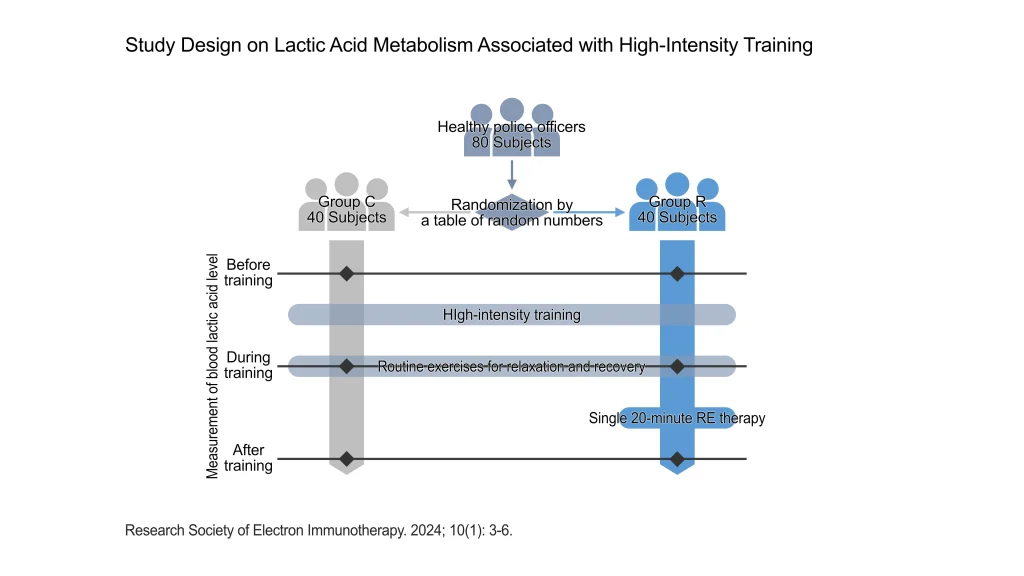The following is an overview of a clinical study on lactic acid metabolism associated with high-intensity training
Study Design
Eighty healthy police officers were the observation subjects for this study. The registered subjects were randomized into the control group (group C) and the RE therapy intervention group (group R) using a table of random numbers. The number of police officers in each group was 40. The police officers in each group underwent the same high-intensity training. After the high-intensity training, group C performed the prescribed relaxation and recovery exercises, while group R had the RE therapy in addition to these. RE therapy in Group R had a single session, with 20 minutes of therapeutic time. The blood lactate levels of each group were measured before, during, and after exercise using a blood lactate measuring device.

Outcomes
The Implications of This Clinical Study
During high-intensity training, lactic acid accumulates in the muscles and blood, and lactic acid dissociates into lactic acid and hydrogen ions in the body fluids. As a result, the acid-base balance of the human body’s internal environment is disrupted, and the pH value decreases. This interferes with ATP synthesis and neuroregulation, reducing nerve excitation and muscle work capacity, resulting in fatigue and reduced athletic ability. Physiologically, accumulating lactic acid and other metabolic products reduces muscle tone and exercise endurance.
High-intensity training increased the blood lactate levels of the police officers who were subjects. However, adding RE therapy to relaxation and recovery exercises decreased blood lactate levels and promoted recovery after exercise.
